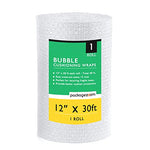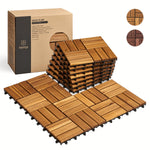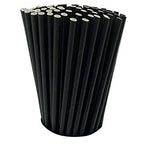You have no items in your shopping cart.
In recent years, the fashion industry has witnessed a significant shift towards sustainability and eco-friendly practices. With growing concerns about the environmental impact of fast fashion, consumers and brands alike are embracing sustainable fashion as a solution. In this article, we will explore the rising trend of sustainable fashion, its impact on the industry, and how individuals can participate in this movement. From ethical sourcing to innovative materials, let's delve into the world of eco-friendly clothing and discover why it is the future of fashion.
The Shift towards Sustainable Fashion
Over the years, the fashion industry has faced scrutiny for its negative environmental and social impacts. From excessive waste and pollution to unethical labor practices, the dark side of fast fashion has become apparent. As a response to these concerns, the concept of sustainable fashion has gained momentum. Sustainable fashion aims to minimize harm to the environment and prioritize ethical practices throughout the entire supply chain.
The Impact of Fast Fashion
Fast fashion, characterized by its quick turnaround of trends and low-cost production, has had detrimental effects on the environment and communities. The industry's rapid production and consumption cycles lead to significant waste generation, water pollution, and carbon emissions. Moreover, many fast fashion brands have been criticized for their exploitation of labor in developing countries. These issues have fueled the urgency for change and the rise of sustainable fashion.
Key Principles of Sustainable Fashion
Sustainable fashion encompasses several key principles that guide the industry towards more responsible practices. Let's explore some of these principles:
-
Ethical Sourcing: Sustainable fashion prioritizes fair trade practices, ensuring workers receive fair wages, safe working conditions, and reasonable hours.
-
Slow Fashion: Slow fashion promotes conscious consumption by encouraging consumers to invest in high-quality, durable clothing that can be worn for a long time, reducing the need for frequent purchases.
-
Recycling and Upcycling: Sustainable fashion emphasizes recycling and upcycling materials to reduce waste. This includes repurposing old garments, using recycled fabrics, and minimizing the use of virgin resources.
-
Use of Eco-Friendly Materials: The use of sustainable and eco-friendly materials is a fundamental aspect of sustainable fashion. This includes organic cotton, hemp, bamboo, recycled polyester, and innovative materials derived from agricultural waste or recycled fibers.
The Rise of Sustainable Fashion Brands
As the demand for sustainable fashion continues to grow, numerous brands have emerged, dedicated to providing eco-friendly clothing options. These brands prioritize transparency, ethical practices, and environmentally friendly materials. From well-established names to independent designers, sustainable fashion brands offer a wide range of stylish and conscious clothing choices for consumers.
How to Embrace Sustainable Fashion
Individuals can contribute to the sustainable fashion movement by making mindful choices in their clothing purchases. Here are some ways to embrace sustainable fashion:
-
Research Brands: Before making a purchase, research brands to ensure they align with sustainable values and practices. Look for certifications like Fair Trade, GOTS (Global Organic Textile Standard), or B Corp to verify their commitment to sustainability.
-
Invest in Timeless Pieces: Opt for timeless and versatile clothing items that can be worn for multiple seasons. This reduces the need for frequent shopping and minimizes waste.
-
Thrift and Secondhand Shopping: Explore thrift stores, consignment shops, and online platforms for pre-loved clothing. Buying secondhand extends the lifecycle of garments and reduces demand for new production.
-
Rent or Borrow Clothing: Consider renting clothing for special occasions or borrowing from friends and family. This allows you to enjoy new outfits without the need for permanent ownership.
-
Take Care of Your Clothes: Properly care for your garments by following care instructions, repairing when needed, and washing them sustainably (e.g., using cold water and eco-friendly detergents).
FAQs
1. Is sustainable fashion more expensive?
While sustainable fashion can sometimes come with a higher price tag, it's important to consider the long-term value and ethical aspects of these garments. Investing in high-quality pieces that last longer can save money in the long run and contribute to a more sustainable wardrobe.
2. Are sustainable fashion brands only focused on environmental issues?
Sustainable fashion brands strive to address both environmental and social issues. They prioritize ethical sourcing, fair trade practices, and transparency throughout the supply chain, ensuring a holistic approach to sustainability.
3. Can sustainable fashion be trendy and stylish?
Absolutely! Sustainable fashion has evolved significantly in recent years, offering trendy and stylish options that cater to different tastes and preferences. From innovative designs to collaborations with renowned fashion influencers, sustainable fashion has become a symbol of style and conscious living.
4. Are there sustainable alternatives to leather and fur?
Yes, sustainable alternatives to leather and fur exist. For example, materials like Piñatex (made from pineapple leaf fibers) and faux fur (made from synthetic fibers) provide animal-friendly and sustainable options for those seeking alternatives to traditional animal-based materials.
5. How can I support sustainable fashion as a consumer?
As a consumer, you can support sustainable fashion by choosing brands that align with your values, spreading awareness about the importance of sustainability, and actively participating in the circular economy through practices like recycling, upcycling, and responsible shopping.
6. Can sustainable fashion have a positive impact on the environment?
Absolutely. By promoting ethical practices, reducing waste, and using eco-friendly materials, sustainable fashion contributes to the preservation of natural resources, reduction of pollution, and overall environmental well-being.
The rise of sustainable fashion signals a positive shift in the fashion industry, where conscious consumerism and environmental responsibility are at the forefront. By embracing sustainable fashion, individuals can contribute to a greener future, support ethical practices, and enjoy stylish clothing that aligns with their values. From researching brands to making mindful choices, each step towards sustainable fashion brings us closer to a more sustainable and equitable world.








